- About MAA
- Membership
- MAA Publications
- Periodicals
- Blogs
- MAA Book Series
- MAA Press (an imprint of the AMS)
- MAA Notes
- MAA Reviews
- Mathematical Communication
- Information for Libraries
- Author Resources
- Advertise with MAA
- Meetings
- Competitions
- Programs
- Communities
- MAA Sections
- SIGMAA
- MAA Connect
- Students
- MAA Awards
- Awards Booklets
- Writing Awards
- Teaching Awards
- Service Awards
- Research Awards
- Lecture Awards
- Putnam Competition Individual and Team Winners
- D. E. Shaw Group AMC 8 Awards & Certificates
- Maryam Mirzakhani AMC 10 A Awards & Certificates
- Two Sigma AMC 10 B Awards & Certificates
- Jane Street AMC 12 A Awards & Certificates
- Akamai AMC 12 B Awards & Certificates
- High School Teachers
- News
You are here
Mathematical Treasure: 18th-Century French Commercial Arithmetic
A decorative French manuscript dating to approximately 1778 reflects the elegance of the period and the lifestyle of the well-to-do prior to the French Revolution of 1789. This handwritten manuscript is anonymous but represents the talents of a skilled and creative scribe. The arithmetic appears to center on commercial matters. The basic operations are explained and demonstrated, both with whole numbers and fractions, as are the arithmetic algorithms needed for commercial calculation, including the “Rule of Three” and “False Position.” Tables for tariffs, conversions, and monetary exchanges are included as well.
Introductory pages for the operations of addition, subtraction, and multiplication follow:


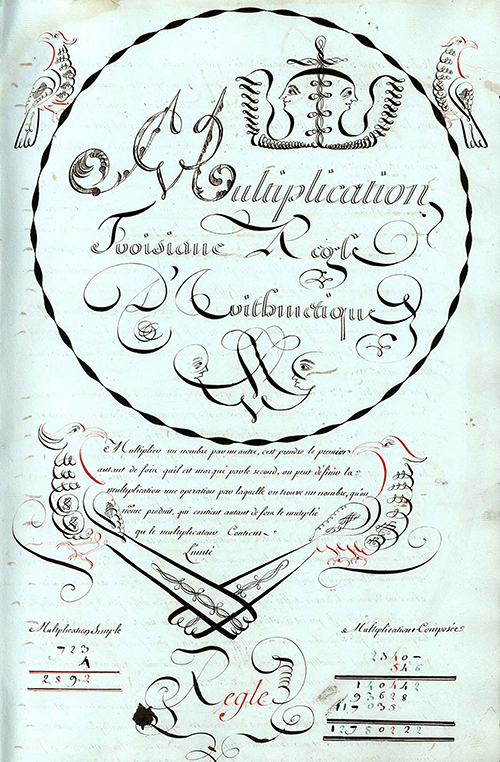
The operation of division, here referred to as “Partition,” is more complicated and required several pages of explanation:



The author included discussions and examples of addition situations involving various units of measure:


Computational rules pertaining to trade and commerce calculations are considered; for example: “Rule of Bureau,” “Rule of False Position,” and “Rule of Exchange.” Situations of monetary exchanges for the specific locales of Holland, England, Hamburg, Spain, and Portugal are discussed:
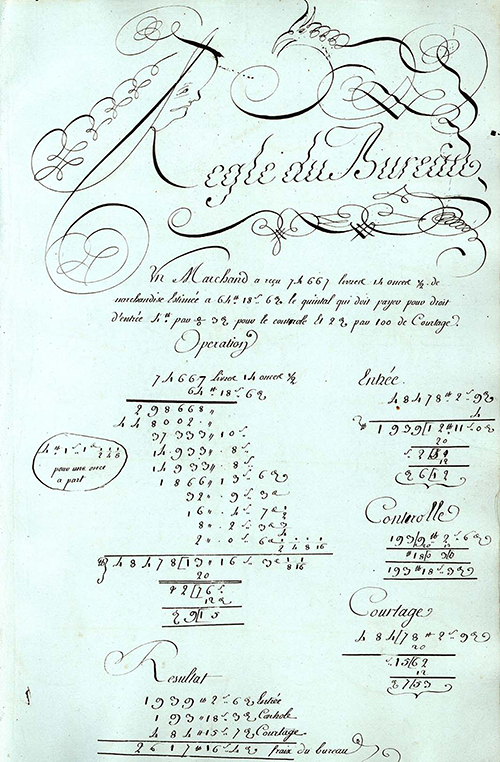

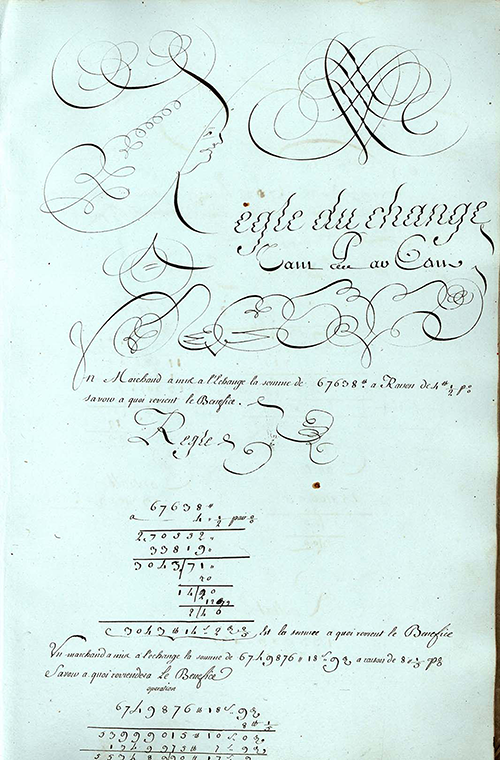
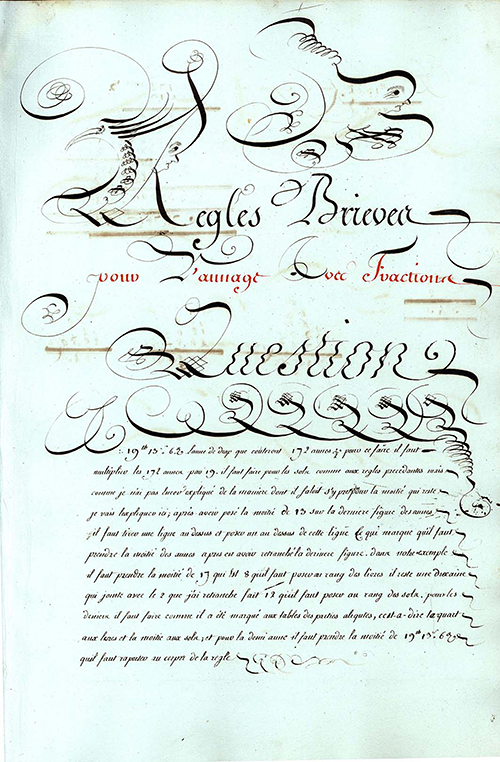
Procedures for obtaining the square and cube root of numbers are included in the instruction:
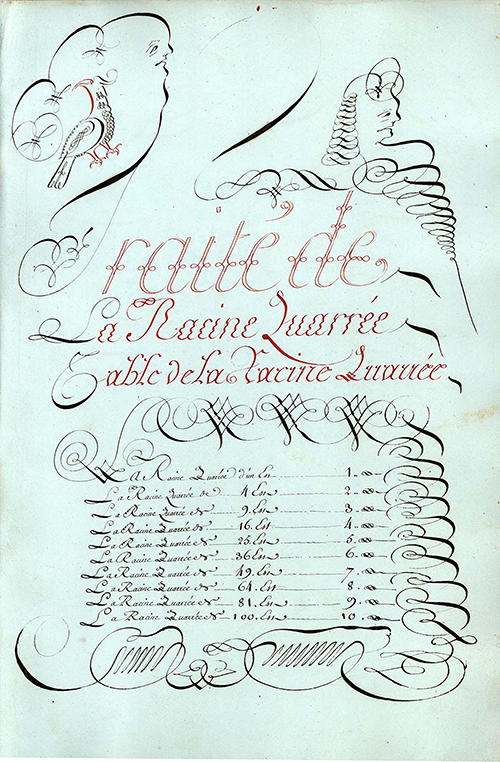

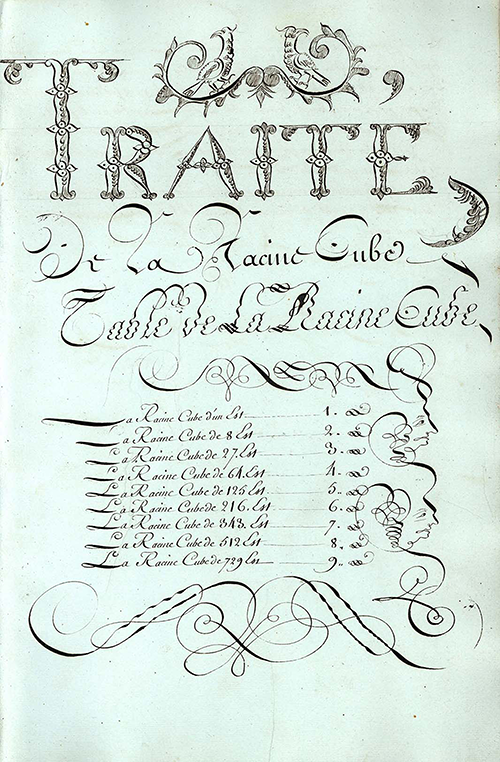
Monetary exchange is a major topic and several sections of the manuscript focus on this necessity:

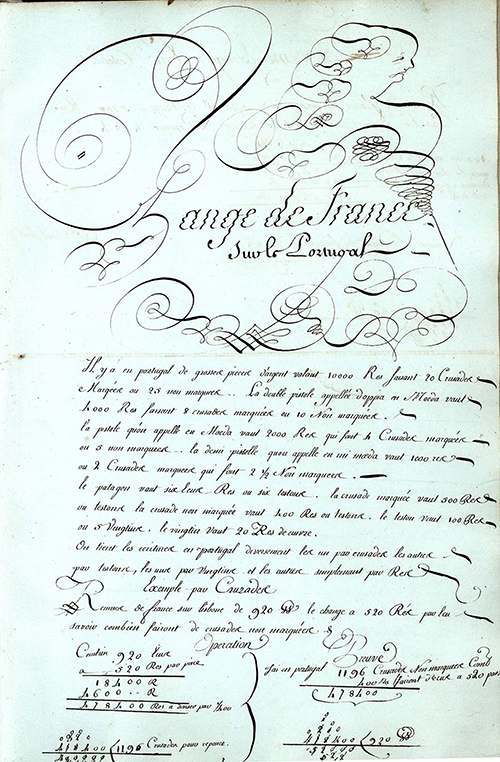
Accounting formats are illustrated:
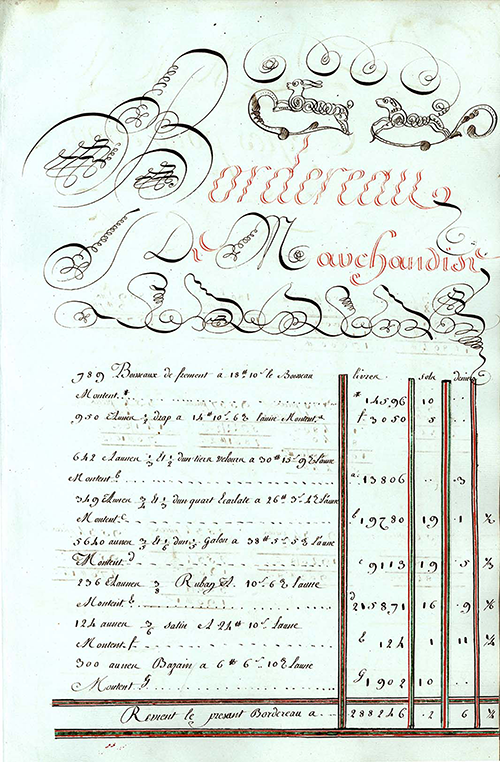
Various reference tables are distributed throughout the work:
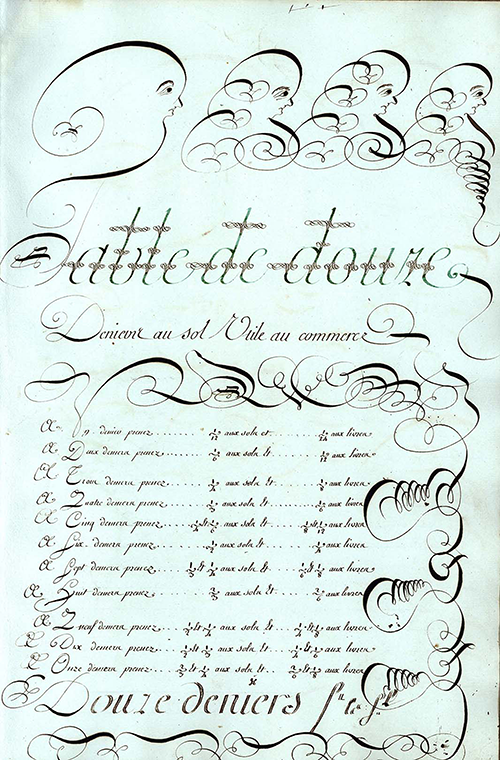
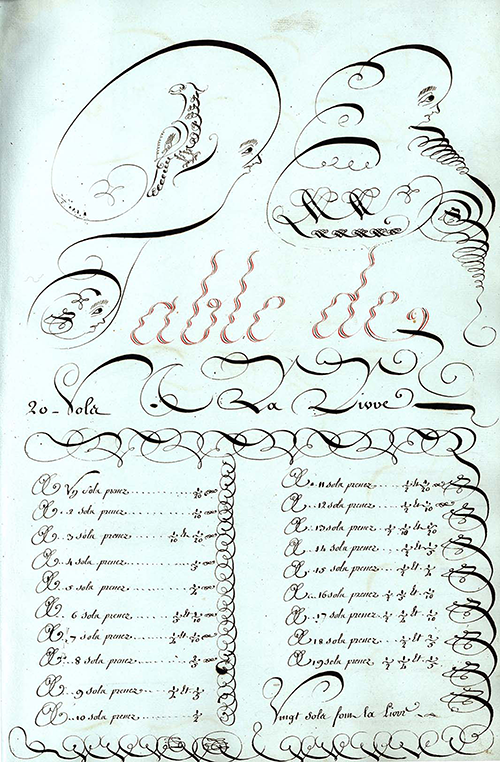

An example of a problem exercise:

During this period of history, calendrical reckoning was still very much a part of commercial life. The phases of the moon determined tides that controlled the flow of seaborne merchandise, and the cycle of the sun and the seasons determined agricultural trade.
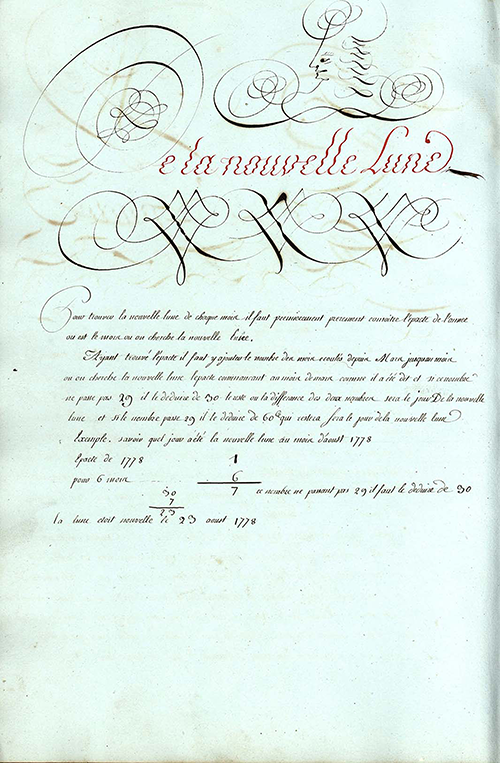
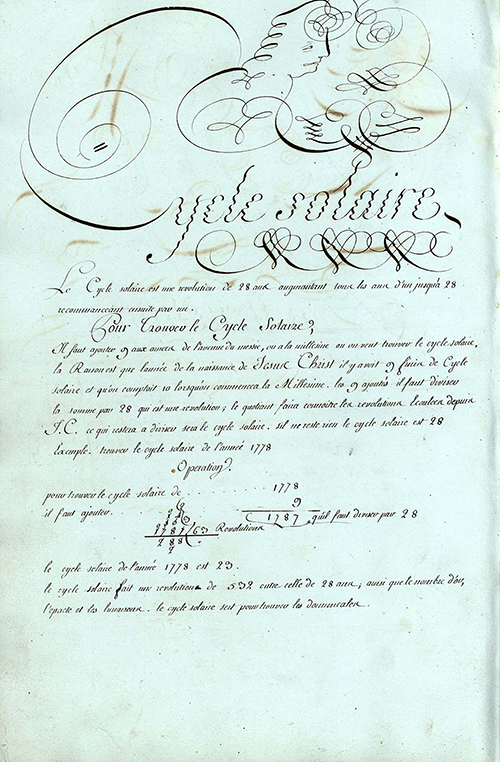
At the end of the 127-page manuscript, the author provided some final comments expressing satisfaction on the completion of the work.

The images above were obtained through the courtesy of the Erwin Tomash Library on the History of Computing and the assistance of Professor Michael Williams, University of Calgary.
Frank J. Swetz (Pennsylvania State University), "Mathematical Treasure: 18th-Century French Commercial Arithmetic," Convergence (August 2018)




